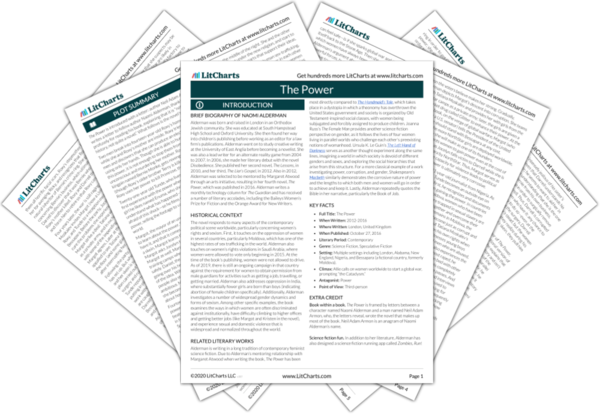Alderman begins to include parallels in some of the language surrounding gender and sex, using language that is most often used to describe women and applying it to men instead. It is more typical that women are made to feel ashamed of sex, and to experience pain as a part of their first sexual encounter—thus intermingling desire, power, lust, fear, and pain just as Tunde describes here. This parallelism allows readers, particularly men, to imagine these kinds of encounters and gain a new perspective on the power inequality between genders during sexual experiences.


